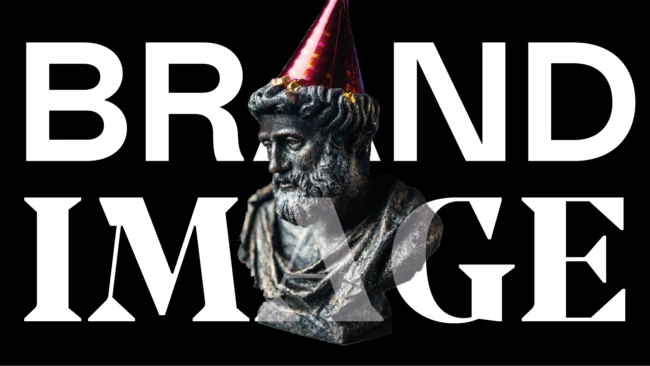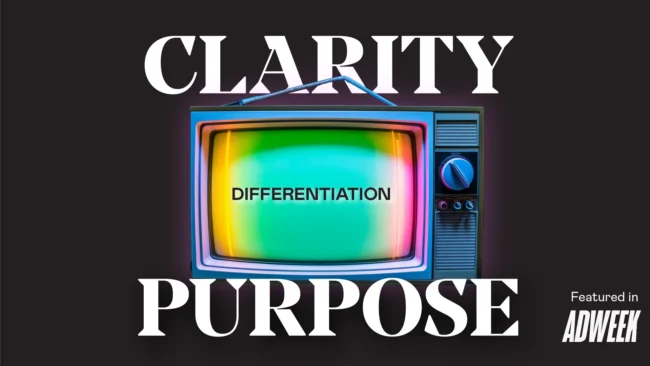
The creative industry has been making a noise about sonic mnemonics for decades. But it’s changing fast. Sound design for brands has evolved from ‘just jingles’ to fully immersive soundscapes.
Distinctive sound patterns strongly associated with logos have been used by makers of TV commercials and radio adverts for years. I mean, ‘Did somebody say Just Eat?’ The power and memorability of the ‘Ba-da-da-da-daaa’ from McDonalds is another great example of a classic technique that is still very effective.
Recent research from IPSOS which consisted of a meta-analysis of more than 2000 pieces of video creative to examine the relationship between effectiveness and the presence or not of brand assets found that only 8% of adverts used audio as part of their distinct brand assets. The study also determined that in terms of branded attention, creative that used audio was three times more likely to be high performing and when sonic brand cues are used, they are over eight times more likely to be high performing.
The importance of sound in our lives is evolutionary – from when humans needed their visual and auditory senses to be alert and aware of the environment around them to stay alive. So, it’s inevitable that stimulating more than one sense, increases a person’s sense of immersion.
Experience-driven brands like Netflix know this all too well. Those of us who enjoyed a boxset binge during lockdown have become very familiar with the ‘ta-dum’ emitted during the opening sequence of Netflix over the past couple of years – it instantly projects you into a galaxy of entertainment. The combined effect of the sound and visual provides an immediate connection to the brand experience that lays ahead of you.
Todd Yellin, Netflix vice-president of product, has explained how the company wanted something that didn’t sound too much like software or games and that the sound would tell a story, in three seconds or less.
But how customers now experience brands has changed to such an extent a mnemonic alone will never achieve the attribution brands need to succeed today. Despite its powerful mnemonic, Netflix could exploit further the possibility of sound across other platforms and places.
Remember when brands introduced motion to inject movement and behaviour into their expression? We’re now seeing sound emerge as the next generation to raise the brand experience game in terms of interactivity, creativity and emotional intelligence. And it’s not limited to experience brands like Netflix, sonic branding is popping up in everything from financial services to mobility.
Sound will emerge as an expressive layer that can add narrative, create atmosphere, guide users through experiences and transport people to destinations, moments, or memories in an instant.
It’s already happening in lots of unusual and wonderful ways. For example, Mastercard created a sonic brand saying it wanted it to be the sound equivalent of its red and yellow circles logo. Consisting of a core melody, the sound could be adopted globally but with local relevance and would be used across its assets – from commercial soundtracks to processed transactions. The financial services brand worked with musicians, artists and agencies across the world on this sonic brand, including with Linkin Park’s Mike Shinoda.
The beauty of sound is that it can be easily adapted and updated. US financial services brand, Nationwide, evolved the famous ‘Nationwide is on your side’ mnemonic into a smooth, jazz fuelled interpretation of a phenomenally famous brand equity.
And how satisfying is the reassurance of the ‘bad-ding’ when you initiate the double click for Apple Pay? It has a positive, almost whimsical charm to the sound, along with the accompanying haptic, it feels like a little reward.
Facebook has recently released a portfolio of Soundmojis for its Messenger app, that add a new level of emotion and response to the humble emoji, by using sound.
The way in which sound can be employed within customer experience goes beyond mnemonics. Recently, we’ve seen how sound can take on a whole new level of meaning for a brand as car manufacturers have explored sound for their electric vehicles (EVs). While electric engines have the benefit of being significantly quieter than traditional engines, engine noise has become an essential part of driving. For pedestrians it warns them of oncoming traffic, while drivers have come to rely on engine noise to judge their speed – the response to sound when driving has become innate.
So, Audi’s sound engineers composed a digital sound for its Audi e-tron GT to rouse the emotion of ‘vorsprung durch technik’ both inside and outside the car. The driver can choose how they want to hear the e-sound while mounted speakers mean pedestrians are alerted to the car approaching.
Another facet of sound that represents a huge untapped brand opportunity is voice. We know voice interactions are still increasing year on year – 41% of adults use voice search at least once a day and in 2020 more than half of all smartphone users engaged with voice tech on their device. And new voice interactions, such as digital humans or the metaverse, will deepen the requirement for brands to define a voice that reflects the brand they want to be.
So, as sound becomes more important, it’s vital that brands are creating premium technology to support that personal sound experience. We are seeing that. Dolby Atmos creates a sound stage that entirely envelopes the user, player or watcher. Spatial audio from Apple moves with the person’s movements and Samsung 360 Audio lets the listener enjoy 360-degree surround sound – all indications that sound is becoming more integrated into the consciousness and expectations of experiences.
So, the stage is set and the opportunity for brands to introduce sound into their brand expressions and build more immersive identities is huge.
Here are the key pointers on how to get the most from sound for your brand:
- Align visual and sound personality and principles
- Create layers that work in harmony across the soundscape
- Create a signature sound that people recognise in multiple expressions
- Create original assets for financial efficiency and creative speed
- Integrate sound into the UX to enrich the user journey
- Consider new technologies that can support immersive experiences.
We believe that incorporating high quality sound into the entire brand experience is one of the greatest untapped potentials for brand owners across the world. Look at Kantar’s Top 100 BrandZ Global brands and only a small proportion of them will be using sound in interesting and engaging ways. There are mega brands that create near silent experiences. What sound do you associate with Amazon for instance?
